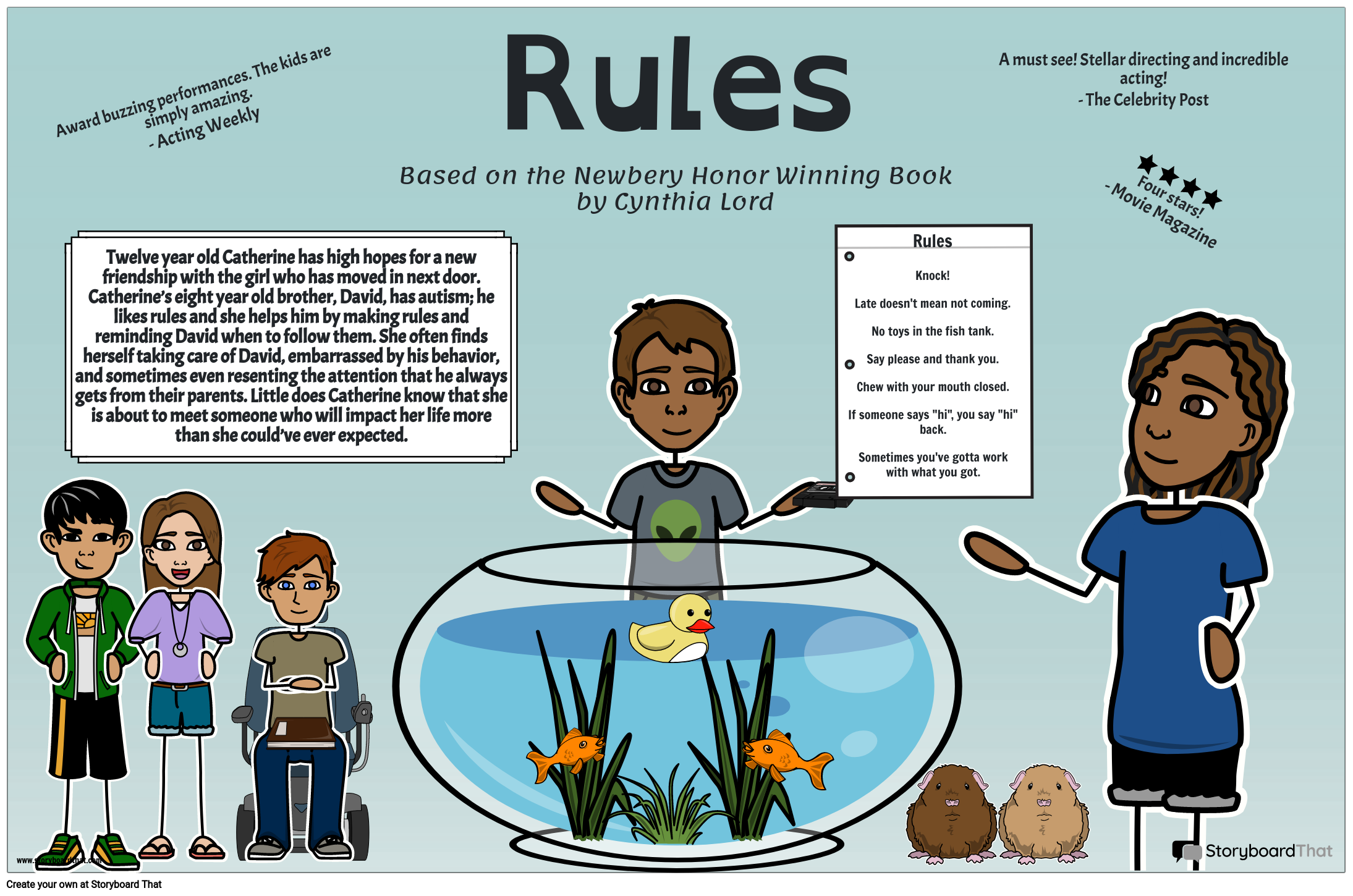Movie Rules: The Ultimate Guide To Mastering The Silver Screen
Ever wondered what makes a movie truly unforgettable? Or how filmmakers follow certain rules to craft stories that stay with us long after the credits roll? Movie rules are like the secret sauce of cinema, and today, we’re diving deep into everything you need to know about them. Whether you’re a film enthusiast or someone who just loves a great story, this article has got you covered.
Picture this: you’re sitting in a dark theater, popcorn in hand, and the screen lights up. That moment when the magic happens? Yeah, it’s not just luck. It’s a combination of clever storytelling, creative direction, and yes, a set of unwritten rules that guide filmmakers through the process. These rules aren’t just suggestions—they’re the backbone of what makes movies so compelling.
From the golden age of Hollywood to the modern blockbusters we know and love, movie rules have evolved over time. But one thing remains constant: they’re designed to keep audiences hooked. So, if you’re ready to uncover the secrets behind your favorite films, buckle up. This is going to be a wild ride.
- Exploring The Intricacies Of Kim Soo Hyuns Relationship Journey
- Unveiling The Mystery The Marietemara Leaked Controversy
What Are Movie Rules Anyway?
Let’s break it down. Movie rules are essentially guidelines that filmmakers use to structure their stories, develop characters, and create emotional connections with the audience. Think of them as a blueprint for success. These rules can apply to everything from scriptwriting to cinematography, and they’re what separate a good movie from a great one.
Now, you might be thinking, “Do filmmakers really follow rules? Isn’t creativity all about breaking them?” And you’re not wrong. The best films often bend or break these rules in creative ways, but even then, they still operate within some kind of framework. Without rules, movies would lose their shape, and we’d end up with chaos on screen. And who wants that?
Why Are Movie Rules Important?
Movie rules are crucial because they help filmmakers create a cohesive experience. They ensure that the story flows smoothly, the characters feel authentic, and the visuals captivate the audience. Without these rules, movies would lack structure, and viewers might end up confused or disengaged.
- Kelly Monaco Unraveling The Mystery Of Her Husband
- Unveiling The Life Of Seargeoh Stallone A Journey Beyond The Spotlight
- They guide the pacing of a film, ensuring it doesn’t drag on too long or rush through important moments.
- They help establish clear character arcs, making it easier for audiences to connect with the people on screen.
- They provide a framework for visual storytelling, helping filmmakers use lighting, camera angles, and other techniques to enhance the narrative.
So, whether you’re watching a romantic comedy or a sci-fi epic, you can bet that movie rules played a role in bringing that story to life.
The Top 10 Movie Rules Every Filmmaker Should Know
Ready to dive into the nitty-gritty? Here are ten movie rules that have stood the test of time:
1. Show, Don’t Tell
This is one of the most famous rules in filmmaking. Instead of having characters explain everything through dialogue, filmmakers use visuals to tell the story. For example, instead of saying, “I’m sad,” a character might stare out a rainy window with a forlorn expression. It’s all about letting the audience feel the emotions rather than being told what to feel.
2. The Three-Act Structure
Most successful movies follow a three-act structure: setup, confrontation, and resolution. This structure helps keep the story organized and ensures that there’s a satisfying arc from beginning to end. Think of it like a roadmap for the film’s journey.
3. Character Arcs
Great movies have characters that grow and change over time. Whether it’s a hero’s journey or a villain’s redemption, audiences love to see characters evolve. This rule ensures that viewers stay invested in the story because they care about what happens to the people on screen.
4. The Rule of Thirds
In cinematography, the rule of thirds is all about composition. It involves dividing the screen into a grid of nine equal parts and placing key elements along these lines. This technique creates a more visually appealing image and draws the viewer’s eye to important details.
5. The Hero’s Journey
Popularized by Joseph Campbell, the hero’s journey is a storytelling framework that many successful films follow. It involves a hero leaving their ordinary world, facing challenges, and ultimately returning transformed. Think of movies like Star Wars or The Lion King—both are classic examples of this structure.
6. Subtext
Subtext is the underlying meaning behind what’s being said or shown on screen. It adds depth to the story and allows audiences to interpret things in their own way. For example, a character might say they’re fine, but their body language suggests otherwise. This creates tension and keeps viewers engaged.
7. The 180-Degree Rule
This rule ensures that the audience always knows where characters are in relation to each other. By keeping the camera on one side of an imaginary line, filmmakers maintain spatial continuity and prevent confusion. It’s especially important in scenes with multiple characters or action sequences.
8. KISS (Keep It Simple, Stupid)
Sometimes, the simplest ideas are the most effective. Filmmakers who try to cram too much into a movie risk overwhelming the audience. By focusing on a clear, concise story, they can create a more impactful experience.
9. The MacGuffin
A MacGuffin is an object, event, or goal that drives the plot forward but isn’t necessarily important in itself. Think of the briefcase in Pulp Fiction or the Maltese Falcon in The Maltese Falcon. These elements give the characters something to pursue, adding tension and excitement to the story.
10. The Final Twist
A great movie often ends with a twist that leaves audiences talking. Whether it’s a shocking revelation or a clever callback to earlier scenes, the final twist can elevate a film from good to unforgettable. Just look at movies like The Sixth Sense or Inception—both rely on unexpected endings to leave a lasting impression.
How Movie Rules Have Evolved Over Time
Movie rules haven’t always been the same. As technology advances and audiences change, filmmakers adapt their techniques to stay relevant. For example, early silent films relied heavily on visual storytelling because there was no dialogue. Today, with the rise of streaming services, filmmakers have more freedom to experiment with unconventional structures and styles.
But some rules remain timeless. The three-act structure, for instance, has been around for centuries and continues to be a staple of successful storytelling. Similarly, the hero’s journey is a universal framework that resonates with audiences across cultures and generations.
The Impact of Technology on Movie Rules
Technology has revolutionized the way movies are made, and with it, some rules have shifted. CGI, for example, allows filmmakers to create stunning visuals that would have been impossible in the past. However, this also means that filmmakers need to be careful not to rely too heavily on special effects at the expense of storytelling.
Streaming platforms like Netflix and Amazon have also changed the game. With more content available than ever before, filmmakers need to find ways to stand out. This has led to a greater emphasis on unique storytelling and innovative approaches to traditional rules.
Breaking the Rules: When It Works
While movie rules are important, sometimes breaking them can lead to incredible results. Take Quentin Tarantino’s Pulp Fiction, for example. The film famously plays with chronology, jumping back and forth in time. This non-linear structure defies traditional rules but adds to the movie’s charm and intrigue.
Other films, like Memento, take this idea even further by telling their stories in reverse. These kinds of experiments can be risky, but when done well, they can create unforgettable experiences for audiences.
When Breaking the Rules Fails
Of course, not every attempt to break the rules works. Sometimes, filmmakers try to be too clever or experimental, and the result is a movie that feels disjointed or confusing. The key is knowing when to follow the rules and when to break them. It’s all about balance.
The Psychology Behind Movie Rules
Why do movie rules work so well? The answer lies in psychology. Our brains are wired to recognize patterns and make sense of the world around us. Movie rules tap into this natural tendency, creating a structure that feels familiar and satisfying.
For example, the three-act structure mirrors the way we experience life: beginning, middle, and end. This makes it easier for audiences to follow and understand the story. Similarly, character arcs reflect our own personal growth and development, making them more relatable.
How Movie Rules Affect Audience Engagement
When filmmakers follow movie rules, they create a more engaging experience for viewers. By using techniques like subtext and visual storytelling, they keep audiences invested in the story. And when they break the rules in creative ways, they surprise and delight us, making the movie more memorable.
Movie Rules in Different Genres
Different genres often have their own unique rules. For example, horror films rely heavily on suspense and tension, while comedies focus on timing and delivery. Here’s a look at how movie rules apply to some popular genres:
Horror
In horror films, the rule of suspense is king. Filmmakers use techniques like jump scares, eerie soundscapes, and slow-building tension to keep audiences on edge. The key is to balance these elements so the audience stays scared without feeling overwhelmed.
Comedy
Comedy is all about timing. A well-timed joke can make or break a scene. Filmmakers also use visual gags and physical comedy to enhance the humor. The best comedies often break the rules by subverting expectations and delivering unexpected punchlines.
Romance
Romantic films typically follow the rule of opposites attract. This creates conflict and tension, which keeps audiences invested in the relationship. Filmmakers also use music and cinematography to enhance the emotional connection between characters.
Real-Life Examples of Movie Rules in Action
Let’s take a look at some famous movies that exemplify these rules:
- Star Wars: Follows the hero’s journey structure, with Luke Skywalker leaving his ordinary life to become a hero.
- The Sixth Sense: Uses the final twist rule to stunning effect, leaving audiences shocked and amazed.
- Inception: Breaks the rules by playing with dream logic, creating a mind-bending experience that challenges viewers.
These films show how movie rules can be both followed and broken to create unforgettable stories.
Conclusion: Why Movie Rules Matter
Movie rules are the foundation of great filmmaking. They provide structure, guide storytelling, and create emotional connections with audiences. Whether you’re a filmmaker or just a movie lover, understanding these rules can deepen your appreciation for the art of cinema.
So, the next time you sit down to watch a movie, pay attention to the rules at play. See how the filmmakers use them to craft a compelling story. And if you’re feeling adventurous, try breaking a rule or two yourself—you never know what kind of magic might happen.
Now it’s your turn. Share your thoughts in the comments below. What’s your favorite movie that follows or breaks the rules? And don’t forget to check out our other articles for more insights into the world of cinema!
Table of Contents
- What Are Movie Rules Anyway?
- Why Are Movie Rules Important?
- The Top 10 Movie Rules Every Filmmaker Should Know
- How Movie Rules Have Evolved Over Time
- Breaking the Rules: When It Works
- The Psychology Behind Movie Rules
- Movie Rules in Different Genres
- Real-Life Examples of Movie Rules in Action
- Conclusion: Why Movie Rules Matter
- Harris Faulkner The Truth Behind Her Illness
- Kirstentoosweet Leaks The Untold Stories Behind The Sensation

Majority Rules (2024) AZ Movies

Rules Movie Poster Storyboard by lauren

10 Classic Horror Movie Rules That Are Still Being Followed Today